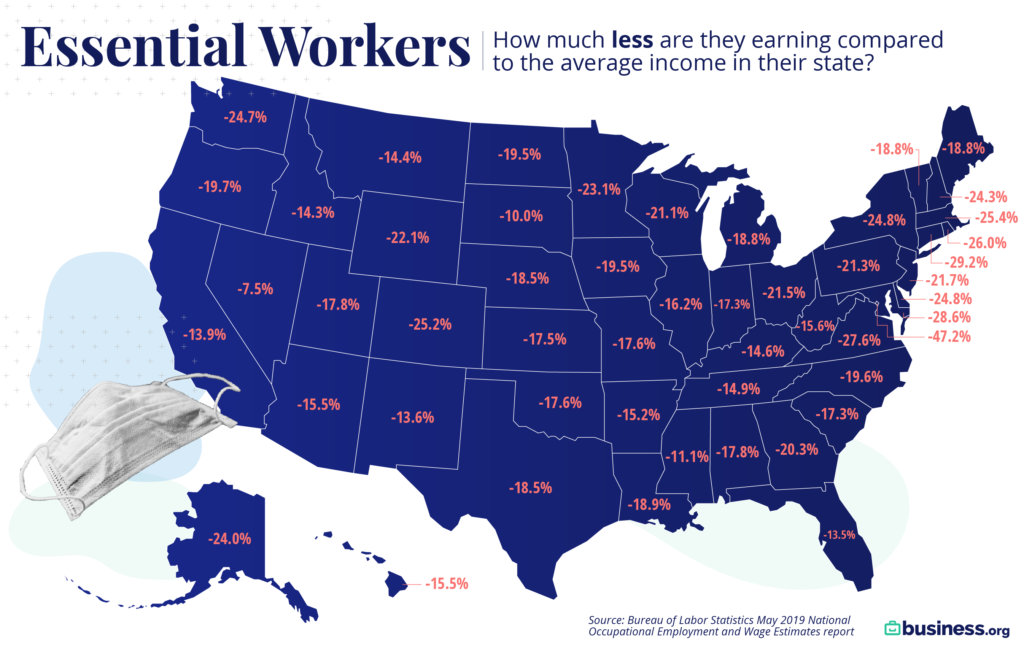We are committed to sharing unbiased reviews. Some of the links on our site are from our partners who compensate us. Read our editorial guidelines and advertising disclosure.
The Average Salary of Essential Workers in 2020

Since the start of the COVID-19 pandemic, essential workers—all those good people who get food to your table and packages to your doorstep—have been putting their lives on the line every day. But for the most part, they're paid substantially less than employees in far less perilous situations.
Nationwide, essential employees earn an average of 18.2% less than employees in other industries. In a handful of states, the difference between essential workers and other employees is closer to 10%—but the discrepancy drops below 10% in only one state: Nevada.
Interesting findings
In every single state, the average salary for essential workers is far below the state's average.
- Even in Nevada, which took our top spot, essential workers still earn 7.8% less on average than the rest of the state.
- In the District of Columbia, the area with the biggest gap, essential workers earn nearly 48% less than the average.
- In Connecticut, which came in second-to-last, essential workers earn around 30% less than the state's average—which, while still a gap, is a huge leap from DC's nearly 50%. In other words, DC lags extremely far behind the rest of the country for paying essential workers.
- Of the essential worker jobs we considered, cashiers make the least nationwide at an average of $23.6K, while postal service employees (at an average of $51.3K) make the most.
- The six lowest-ranked states are on the East Coast: Massachusetts, Rhode Island, Virginia, Maryland, Connecticut, and the District of Columbia.
Want to know where your state fits into the mix? Here's our complete ranking of the best and worst states for essential workers.
By signing up I agree to the Terms of Use and Privacy Policy.
The best-paying states for essential workers
Our methodology
To calculate the average salary of essential workers in each state, we drew data from the Bureau of Labor Statistics' National Occupational Employment and Wage Estimates report from May 2019.1
In particular, we looked at the average salaries of retail salespersons, postal service mail carriers, light truck drivers, cashiers, janitors, and cleaners. We then compared those averages with each state's overall average salary.
Note that health care workers are not included in the essential worker salary averages.
Fair salaries are essential for essential workers
Hopefully, some proposed bills could help close the essential workers' pay gap.2 But in the meantime, help essential workers out by washing your hands, wearing a mask in public, and staying six feet away while they do their jobs. And don't forget that essential employees will remain essential after the pandemic. They'll still be there, day in and day out, and they should be compensated fairly then too.
Disclaimer
At Business.org, our research is meant to offer general product and service recommendations. We don't guarantee that our suggestions will work best for each individual or business, so consider your unique needs when choosing products and services.




